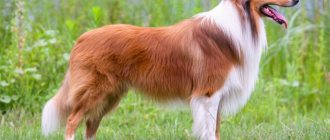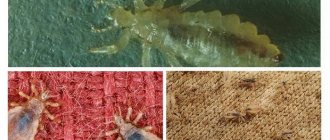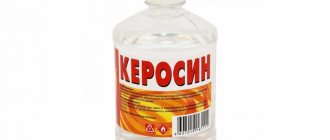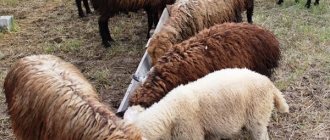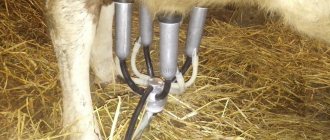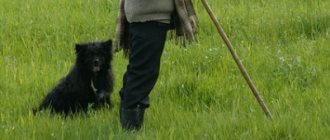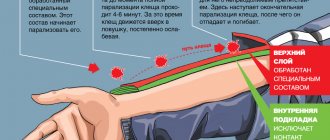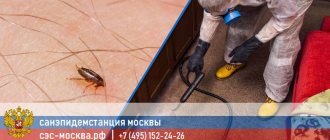Sheep wool is widely used for the production of clothing, shoes, carpets, and blankets. Such material is always highly valued on the market, as a result of which the number of breeders involved in sheep breeding is constantly growing. Today, the largest number of farms raising such animals are concentrated in Australia, China, Great Britain, and Turkey. But it is worth talking about the value of raw materials only if the processing of sheep wool is properly organized. And this direction, if properly organized, can become a completely profitable business, promising considerable benefits to the breeder.
Sheepskin
Features of business organization
Organizing a successful enterprise for raising sheep and processing wool involves a number of important nuances that are worth paying attention to. Only in this case can we talk about significant benefits.
First of all, the breeder must determine for what purpose he plans to raise sheep. The production of wool can become either the main specialization of the farm or a secondary one. In the second case, the main direction will be meat, milk, lambs for other farms or smushki. It depends on what specific breed of livestock to breed.
But it is irrational to determine the target direction of an enterprise only on the basis of one’s own preferences. You should definitely take into account:
- Demand for products in the region and throughout the country. If there are meat processing plants or dairy production facilities in the immediate vicinity of the farm, then it may be more profitable to consider wool as a secondary product. If there are massive textile industries, it will be more profitable to focus specifically on wool processing.
- State support. When opening a large enterprise, you should check with the local administration about the availability of existing government projects in this direction. Such programs involve subsidies, assistance in marketing products for export, and provision of areas for grazing.
The last point is especially important. Without the presence of vast pastures available for exploitation by private owners, it is not possible to organize a large sheep farm.
Sheep grazing
You should also take into account the climate and topography of the region. This moment allows you to correctly determine the direction of wool production and decide on the breed suitable for it. The main directions in this regard include:
- Coarse-haired. As the name suggests, the main goal of such sheep farming is to obtain coarse wool. It is suitable for breeds that are accustomed to desert and semi-desert regions.
- Semi-coarse-haired. Semi-rough raw materials are obtained from sheep, which are bred in mountainous areas. Not all breeds are suitable for breeding in such conditions.
- Fine wool. This direction of sheep breeding involves the cultivation of varieties bred in the steppes and deserts.
- Semi-fine fleece. This direction is implemented in regions with vast rich pastures and a humid climate. At the same time, appropriate types of livestock are selected.
For most regions of Russia with their characteristic climate, the most rational direction of wool production is semi-fine wool.
Back to the roots
The number of sheep is one of the sources of large amounts of greenhouse gases entering the atmosphere, and pastures, for which vast territories have been allocated and forests have been cut down, are one of the reasons for the loss of biodiversity. At the very least, these arguments suggest that raising animals for wool is completely unenvironmental.
But natural wool can be considered not just as the lesser of two evils, but even as good (albeit with a stretch). Sweaters made from this material are more likely to be inherited (that is, they are bought and thrown away less often), they are washed less often (and no water or electricity is wasted on this), wool absorbs body odor 66% less than polyester fabrics. According to the Fashion Revolution movement, a quarter of the carbon footprint of clothing comes from washing. And the entire fashion industry will be responsible for a quarter of global carbon emissions by 2050 (if it doesn’t come to its senses now). So carbon sequestration rather than carbon production is what we really need to work on.
Due to climate change, 25 countries have decided to massively use the concept of carbon farming on their own fields. The idea is to move excess carbon from the atmosphere, where it contributes to global warming, into the soil. The principle is quite simple, but is rarely used in practice because many farmers underestimate its importance for plants, although it accelerates their growth.
Bare Ranch was the first to implement the Carbon Farm Plan in collaboration with Fibershed. It works like this: a layer of compost is applied to pasture meadows and arable land - it is rich in a more stable form of carbon that is difficult to oxidize. Rotating pastures should prevent overgrazing and allow grass to grow and continue to sequester carbon. By planting native plants and trees, they plan to restore the ecosystem near the local stream. In total, all the changes will help the ranch sequester more than 4,000 metric tons of carbon each year—the equivalent of taking 800 cars off the road. Two-thirds of the ranch's wool is produced for The North Face. Last year they released a line of hats made from “climate-friendly” wool, followed by men’s and women’s sweaters and scarves.
Sheep Inc. sources its wool exclusively from farms that use regenerative farming methods. This approach rejects the use of chemical fertilizers, and its main task is to restore the soil.
Every stage of production on these farms follows sustainable standards, from using renewable energy to innovations like zero-waste knitting.
“We have a number of different countries in our supply chain (Sheep Inc. is based in London and the sheep originate from New Zealand) but we exclusively use ocean shipping. This means that transport makes up only a small part of our carbon footprint (about 1%). However, we are constantly looking for new ways to deliver sustainably,” their website says.
The wool yarn is made in an Italian factory that runs on renewable energy. The result is a thread called Cashwool, which combines all the technical advantages of merino wool and the softness of cashmere. All products are biodegradable - after they have served their purpose, they can simply be composted.
Types of wool raw materials
After studying the general points and available resources, you should also pay attention to the existing types of wool. Each of them requires its own texture and quality, which ultimately affects the cost of raw materials. The main types of wool products include:
- Fine wool. Such raw materials are obtained by shearing fine-wool sheep. The basis of this fabric consists mainly of downy hairs, which provides it with special softness. The average length of fine wool does not exceed 9 cm. In the process of processing raw products, it is possible to obtain no more than 50%. This material is highly valued in textile production.
- Semi-thin. There is significantly less fluff in this composition, and the main part is occupied by transitional hair. The raw materials are obtained from semi-fine fleece sheep. The value of such material is already lower. It is used to produce a separate type of felt.
- Semi-rough. In addition to down and intermediate hair, the wool also includes a thin awn. The length of the fibers ranges from 8 to 19 cm. It is obtained from semi-coarse-haired animals and hybrids of coarse-haired and fine-wooled varieties. Such raw materials are used in the production of coarse carpets, shoes, felt, which is designed for installation in cars.
- Coarse wool. Assumes the presence of all types of hair fibers. Depending on the length, it is divided into spring and autumn. Such products are obtained exclusively from coarse-haired breeds of cattle. It is used for the production of technical felt and individual parts of shoes.
Also, all wool obtained from sheep can be divided into:
- Homogeneous. It contains one specific type of animal hair. It consists exclusively of down, transitional hair or awn.
- Heterogeneous. The texture of such a fabric suggests the presence of several types of fibers. Heterogeneous raw materials are valued lower than homogeneous ones.
Reference. Often, to improve the quality of semi-coarse, coarse and semi-fine material, crossing the corresponding breed of sheep with representatives of the fine-fleece direction is used. In most cases, this can significantly improve the quality of the hair of the resulting offspring.
Care
With careful use and proper care, Virginia wool can last for decades. Products made from it are slightly dirty, so they do not require regular cleaning. If stains appear, they try to remove them point by point. Rules of care:
- Follow the manufacturer's directions on the label.
- If the label is cut off and lost, you should give preference to dry cleaning (use dry cleaning services).
- Items made from virgin wool are stored in folded plastic bags. You should choose a dark, moth-free place. Storage on hangers is not recommended due to the risk of deformation.
In rare cases, virgin wool can be washed by hand or in a washing machine on a delicate cycle without spinning. Before washing, turn the product inside out. The water temperature should not exceed 30 degrees. When wet, the fabric is easily damaged. Rubbing it with a brush or twisting it is strictly prohibited. It is better to use liquid detergents special for woolen items. After washing, the fabric is soaked in a towel and left to dry in a horizontal position. After drying, the product can be steamed with a steam iron through gauze.
Breed selection
Having decided on the main direction of the farm’s work, you can move on to choosing specific breeds of small cattle. Breeders obtain the highest quality raw materials when breeding semi-fine-fleece long-wool sheep. A characteristic feature of such products is uniform wool with a unique shine, which is highly valued in textile production. The most popular breeds in this regard include:
Lincoln sheep breed
- Russian longhair. The fur of such animals is uniform, soft and shiny. The average annual clip from one ram is 6 kg. The uterus produces up to 4.8 kg of raw materials per year. The breed line was developed by crossing local varieties of sheep with animals of the Lincoln breed.
- Lincolnskaya. The wool of this breed is especially highly valued. It is distinguished by intense shine, special strength and length of hair fibers. The average yield of pure material is 55%. Priming is carried out twice a year. The average annual weight of wool from one ram reaches 8-10 kg. About 5.5 kg is shorn from a sheep. Lincolns are quite demanding when it comes to living conditions.
To obtain second-class raw materials, the following types of animals are bred:
- Corridel. These animals have coats that are completely white or with shades of beige. It is highly valued by buyers. The animals themselves are hardy and suitable for year-round keeping on pastures.
- Romney march. Hair also suggests high value. Of the initial cutting, about 60-65% remains after processing. The average volume of wool from one ram is 8 kg.
- Kuibyshevskaya. This is a native Russian breed. It also implies high levels of productivity. Up to 5.5 kg of wool is sheared from one male per year. During processing, about 56% of the original volume is retained. Sheep can withstand high temperatures.
- Tien Shan. This variety brings the owner up to 10 kg of crossbred wool per year. The length of its hairs is 12-12.5 cm. The yield after processing is 68-70%.
Questions and answers
Question: Is it true that Virginia wool is the wool of a virgin sheep?
Answer: No. The myth arose due to an incorrect interpretation of the term “virgin”. From English the word is translated not only as “first”, but also as “virgin”. Hence the speculation that this wool is collected from young sheep up to 6 months old. Thin, soft fibers from the first haircut are almost weightless. They are very warm and not at all harsh. However, lambs' wool has completely different markings.
Question: How is lambs' wool labeled?
Answer: Lambswool. This is the highest quality and most expensive wool. More precisely, it is the undercoat of a lamb, sheared at the age of 6-7 months. Each fiber has very thin, curled ends and resembles fluff. The high price is due to the fact that no more than 150 g of raw material can be collected from one animal. To reduce the cost, lambswool is mixed with synthetic fibers - acrylic and polyamide.
With the onset of cold weather, many people replenish their wardrobe with warm clothes - coats, hats, mittens, sweaters... From time immemorial, wool has been considered the best material for making such clothes. It comes in several types and different qualities. Virginia sheep wool is one of the most popular. By purchasing products marked “virgin wool” you can be sure of the quality. The thing will last a long time and will keep you warm in severe frosts.
Primary processing of wool
Immediately after shearing the sheep, the owner of the farm receives raw material. This is unwashed wool. There are two ways to implement it:
- Delivery of the entire volume of raw materials to procurement enterprises. In such institutions, wool is washed and processed, and in processed form it is sent to textile factories. The cost of raw materials is quite low.
- Independent processing of raw materials. In this case, the material is processed on the farm and sold to factories without an intermediary. The benefits are much higher.
Of course, the second option requires additional purchase of equipment and the formation of a production line. The specific configuration of such a line will depend on the wishes and capabilities of the owner. But the minimum equipment it includes includes specialized washing machines and dryers. Today there are several varieties of such technology. The main difference is performance. Its value can range from 14 to 400 kg of raw materials per hour.
Sheep wool processing
The washing machine washes the fibers free of any particles of dust and dirt. The drying machine removes excess moisture from the resulting fraction. For a small start-up farm, in this regard, a line with a productivity of up to 15 kg/h will be sufficient.
Material properties
The main feature of wool is its ability to felt. This property is explained by the softness and crimp of the fibers and the presence of a scaly layer on the surface. The production of woolen fabrics is a labor-intensive process. The material is used to produce drapes, cloth, felt, felted and felt products. Wool has low thermal conductivity, so it is indispensable in the production of suit, dress, coat fabrics, and winter knitwear.
The material removed from sheep is usually highly contaminated and, as a rule, is very heterogeneous in quality. Therefore, before sending wool to a textile factory, it is first processed. This process includes sorting, loosening, scuffing, washing, drying, packaging.
Processing tools
Washing and drying wool is just one of the stages of a sheep farm. But, before they can be carried out, it is necessary to cut off the raw material from the living creatures. You will also need to remove unnecessary hair from the fraction and organize the remaining material. All this is done using the appropriate tool. The list of essentials includes:
- electric sheep clipper or special scissors;
- carder;
- comb used for combing wool;
- spinning wheel;
- spindle.
It is also advisable to purchase a loom for the farm in advance. In this case, the breeder will also have the opportunity to try his hand at independently producing textiles. Handmade textiles are also highly valued in the market.
The type of tool should also be selected based on financial capabilities and production volumes. In a small enterprise, staff can handle this with hand tools. For larger objects, it is necessary to purchase an automatic carder, a spinning wheel and a flock shearing machine.
100% recycled down
Recycled down is a blend of goose and duck down with 600/700 Fill Power, sourced from recycled pillows and other end-of-life bedding. The final product is hypoallergenic, and the quality is no worse than new down.
The market for recycled down and feathers has long existed in Europe. It took Patagonia some time to find ideal partners in the US who could meet the high quality standards. Over time, this work really paid off. The suppliers Patagonia partners with share the company's values and guarantee high quality and uncompromising performance.
As a result, as it turned out, demand creates supply. Now other textile companies are following Patagonia's lead. We hope that their experience will encourage the use of recycling in even more countries. By deriving the product from actual waste (items that might have ended up in the trash had they not been recycled), the company reduces CO2 emissions, thereby helping to expand the recycling stream and increase its value. Recycling directly supports Patagonia's original mission: "To make the best product without causing unnecessary harm to the environment, and to use business to drive and implement solutions to the environmental crisis."
.
How to create a sheep wool processing business?
In general, a sheep wool processing plant may involve one or more stages of product production. So, the farm owner can organize:
- An enterprise with a full production cycle. It involves raising sheep, collecting raw materials and its further processing.
- Partial cycle enterprise. It is profitable to open it in regions where large sheep farms are already concentrated. In this case, the company plays the role of an intermediary, buying raw materials, carrying out primary processing and sending them for export or to regional textile factories.
- Small processing workshop complete with production equipment. In this case, in addition to purchasing wool and raising sheep to obtain raw material, the owner will also earn money from producing textiles. The simplest line allows the production of bed linen and other similar textile products.
A full-cycle enterprise also involves certain benefits from milk and meat obtained from the flock. But it requires the greatest costs for organizing a business.
Processing sheep wool in private enterprises is gaining increasing popularity among novice entrepreneurs. Such a business requires relatively few investments, quickly pays for itself, and the demand for products is constantly growing. But when organizing such a business, it is necessary to clearly analyze the resources available in the region, the availability of pastures, and access to government programs. Only in this case will the business be successful and bring benefits.
Recruitment
In a field of activity such as wool processing, workers do not need to have a qualified permit to work or health certificates. For a medium-sized enterprise with two or three lines, a service staff of five to six people, including a technologist and engineer, is sufficient.
These two specialists must have specialized education; accordingly, their salary will be higher than that of ordinary workers. The labor of the remaining employees is considered unskilled, so the cost of paying them will not be large.
Why are tons of sheep's wool burned? The sales market is not working
Raising sheep has long been practiced in a number of regions of Russia. Breeding and processing the wool of these animals on an industrial scale is considered a profitable area among farmers, as in a number of countries that sell sheep products abroad.
China has the most developed production, constantly maintaining more than 100 million heads, Australia has 120 million heads, India and Iran more than 50 million. New Zealand ranks fifth in terms of livestock - 47.4 million sheep, England - 42 million.
individuals, the top ten includes Türkiye, South Africa and Sudan.
Wool processing
Sheep wool processing in different regions
In the Russian Federation as a whole, the livestock reaches the volumes of Spain and Morocco - today it is about 25 million heads. The first place in the world in the processing and production of wool raw materials is occupied by Australia, as well as New Zealand and China; a significant share is produced by the former southern republics of the USSR.
Sheep farming and wool processing for Russia can also become an export direction, for which the state is taking action to support farming.
First of all, high-quality wool raw materials are necessary to saturate the domestic market and reduce the retail price of products for daily use.
Meat and wool production is one of the most promising farming areas in the Russian Federation
Today, Russian textile production is experiencing a serious shortage of high-quality natural raw materials, as a result there is no possibility of producing inexpensive and accessible products for the population.
The development of sheep farming, focused on wool processing, can, of course, help with this. The features of organizing such a business within a farm and its prospects will be discussed in our review.
Features of the process of organizing a sheep farming business
In sheep farming, wool can be the main or additional product.
Traditionally, farms produce dairy products, dietary meat, wool, smushki (skins of newborn astrakhan lambs), and natural sheepskin.
Sheep breeding is developing well in those areas where there is a sufficient amount of pasture, and in the modern understanding of business, an established sales system.
Skins of newborn lambs
It is obvious that in the end the efficiency of farm sheep farming will depend mainly on government regulation measures and on the assistance that a farmer can receive for his needs.
For large businesses that want to integrate into the emerging infrastructure, the task is to establish sustainable corporate connections of the type “from primary raw materials to the final consumer.”
In this case, the final consumer of textile products is the population of the country, whose demand is currently not at all satisfied.
Wool is a promising export product for network wool harvesting enterprises within the framework of public and private projects. In Russia, there is the most important factor in sheep production - vast pastures, accessible to private owners, suitable for sheep breeding. In addition, this farming business can be called one of the most affordable in terms of initial investment.
Recycling business
There are 4 areas in wool farming:
- fine-fleece - breeds typical of steppes and deserts are bred;
- semi-fine-fleece - bet is placed on breeds that live in areas with a mild, humid climate;
- semi-coarse wool - based on sheep breeds characteristic of mountainous regions;
- coarse-wooled, for example, smushkovoe - sheep of this type traditionally live in semi-desert areas and deserts.
The highest grades of wool raw materials are obtained by raising sheep in mountainous areas with desert and semi-desert pastures (tropics, subtropics).
At the same time, a number of breeds from which high-quality natural raw materials are obtained can be bred in colder plains and mountainous areas. Coarse-haired breeding includes smushkovo and fur coat breeding.
To the north, meat-fat and meat-and-dairy sheep of the coarse-wool and semi-coarse-wool type are mainly bred. The infographic and table show the areas where different types of sheep farming are traditionally developed.
Sheep farming zones in Russia and CIS countries
Explanation of sheep breeding zones in Russia and the CIS countries.
| Marking | Specialization | Regions |
| Blue | Fine wool sheep breeding |
|
| Green | Fine and semi-fine wool production |
|
| Yellow | Fine-fleece, semi-fine-fleece, meat-wool-dairy production |
|
| Blue | Semi-fine wool meat and wool production |
|
| Red | Fur sheep breeding |
|
| Orange | Smushko and meat-fat sheep breeding |
|
/ Publishing House / Processing raw leather, wool and making items from them for household needs
4.1.4. PROCESSING OF RAW HEADS, WOOL AND MANUFACTURING ITEMS FROM THEM FOR HOUSEHOLD NEEDS
Buryat pastoralists have long produced at home almost everything necessary to satisfy the need for a variety of household and household items. (Batueva I.B., 1992)
Animal wool, hair, sinew and skin have been used by pastoralists since ancient times. Processing wool and making felt and other necessary products from it was of great importance in the everyday life of the Buryats.
Fig.20. Coarse wool sheep and goats. (Photo by V.A. Taishin)
One family could not process wool and make felt, as this is a very labor-intensive, painstaking process. Therefore, all members of the nomadic community participated in the production of felt. After shearing, the wool was sorted. Clean and long wool from the back of a sheep was considered first-class. She went to make felt.
The wool was dried for several days in the sun. Then willow twigs about a meter long, up to 8-10 cm thick were prepared and carefully cleared of peel and knots for beating wool. Women mainly take part in beating wool.
When the wool became ready - clean, fluffy, it was twisted into bundles, taken to storage and a new batch began to be beaten.
Fig.21. Processing wool at home. (Photo by D.Zh. Batueva)
Fig.21. Processing wool at home. (Photo by D.Zh. Batueva)
At the next stage, water was heated with a small amount of sour milk. This was done to clean the felt from dirt and dandruff. The wool was laid out on a felt, doused with water, the ends of the felt were bent and they began to be poured abundantly with water.
Having wetted the wool, they placed a long round log with a diameter of 15-20 cm, cleared of bark and knots, on the edge, and wrapped a felt felt with wool around it. The free edge of the felt was sewn together with a sparse seam using hair threads.
The resulting roll was tied with a rope and they began to roll the felt on the rope for an hour and a half, from time to time pouring hot water with sour milk into the holes between the seams. Then the already fused felt was turned over, wrapped around the log and rolled again for an hour, after which it was finally removed from the felt.
Felt removed from the felt was rolled on a clean floor or bed. After which it was taken outside and spread out to dry in the sun. After a day or two, the felt was considered ready. Carpets and felted shoes were also made from coarse sheep wool.
Fig.23. Product made from coarse sheep wool. Carpet factory Republic of Tyva. (Photo by R.G. Shabanova)
Horses' mane and tail hair were used to make various ropes, with tail hair being valued higher than mane hair. Reins, girths for saddles, collars for calves, fetters for horses, reins for bridles, handles for buckets and nets for catching fish were spun from horse hair.
Fig.24. Shoes made from sheep's wool. Ulan-Ude. (Photo by R.G. Shabanova)
Yak hair has high thermal insulation properties. In winter, hair density increases 1.5 times, with the exception of the muzzle, legs and tail. Down covers the entire body with a dense layer in the form of undercoat.
There are differences in the fractional composition: there is 4.3 times more fluff, 2.8 and 2.1 times less awn and transitional hair, respectively. (Solomonov N.G. et al., 1980). Yak fluff does not differ in tonicity from the fluff of coarse-wool sheep: 30.1 and 29.6-33.6 microns, respectively.
The morphological structure of the fibers is also similar; there is a scaly layer, a well-defined curl, especially in young animals.
With growth, the ratio of fractions in the cover changes: for example, in 4.5-year-old yaks, the belly contains 58% of down, on the shoulder blade - 67%, in 5-year-old yaks - 37.7 and 57.7%, respectively. (Lyubimov I.M., Ivanov V.V., 1936)
Yak molt occurs once a year and lasts for quite a long time. The change from winter to summer cover in adult animals begins at the end of April, proceeds intensively at the end of May - June, and ends in the first half of July. In well-nourished animals it passes faster.
Newborn eggs are covered with uniform, delicate black hair up to 3-3.5 cm long, reminiscent of the undercoat of adult animals. From the very first months, fluff begins to grow.
Juvenile hair is completely replaced by a second coat of fur by the end of summer. Starting from the 6-7th month, coarse hair appears along the ridge of the neck, back, and sacrum, and a fringe is formed.
During the winter, young animals go into winter covered with thick hair and abundant downy undercoat (Maturova E.M., Katsina E.V., 1990).
Camel wool is very durable. In terms of strength and durability, it surpasses all types of sheep wool. She does not have such vices as hungry tone, interception, retracing. The average wool clip of female Bactrians is 6 kg, of males – 10 kg. The grease content is insignificant, therefore the yield of pure fiber is high - 80-85%.
The length of the fur varies on different parts of the body. The longest, grows on the occipital crest, on the upper and lower parts of the neck, forearm and humps. The tail is covered with coarse hair; there is almost no brush at the end of the tail. The rest of the body is covered with thick soft hair 3-4 cm long.
The most valuable part of wool is down, which looks and feels very soft and silky. The fluff is combed out with a fine comb or washed by hand once every 2-3 days. The camel is shorn by laying it on a flat and clean surface, tying its front legs or fixing it in a split in a standing position.
They begin to cut from the upper part of the body and from the humps, trimming the base of the guard hairs. Camels are shorn once a year in May-June, when the wool is trimmed.
Recycled polyester
As mentioned above, Patagonia began recycling polyester in 1993. This was a positive step towards a more sustainable production process that uses fewer resources and produces fewer emissions.
Today the company converts used plastic bottles, unusable industrial waste and worn-out clothing (including its own brand) into polyester fibers.
Again, recycling polyester reduces our dependence on oil!
Patagonia offers a wide range of clothing made from recycled polyesters: base layers, jackets, membrane clothing, shorts, fleece, etc.
.
Photo: Bernd Zeugswetter
